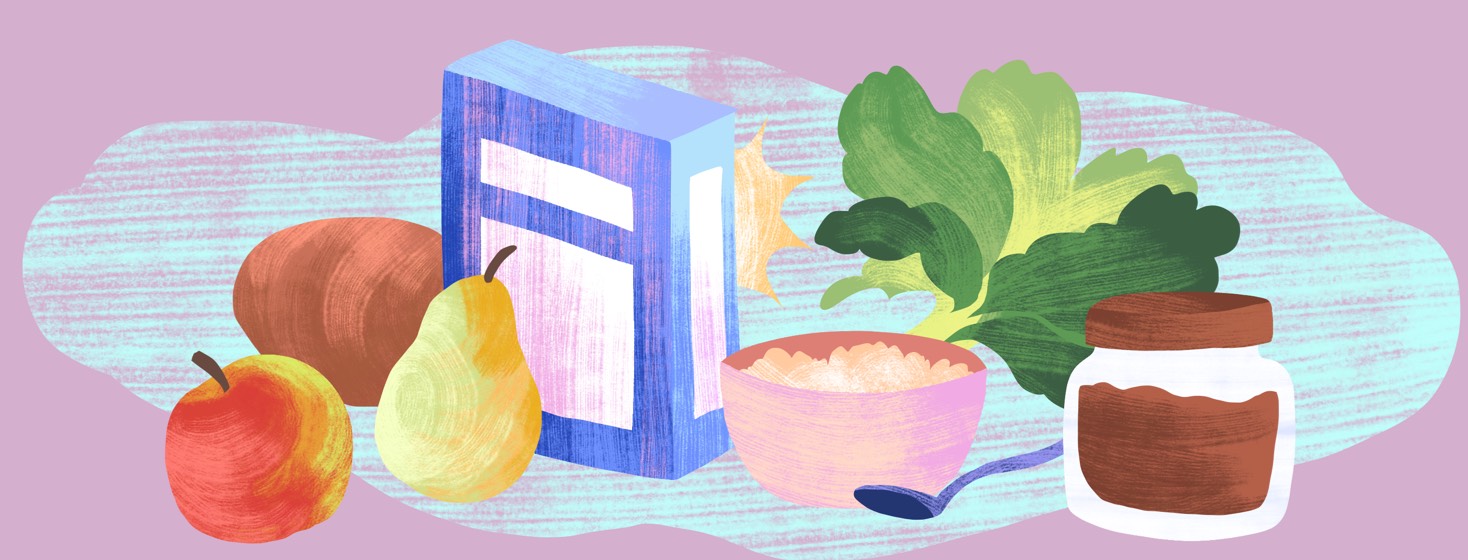Tips and Tricks to Fuel Your Meals With Fiber
While fiber is an important aspect of everyone's diet, fiber plays an even more critical for people living with type 2 diabetes. Fiber can slow the gut's absorption of sugar, so it is essential to understand how fiber intake can impact blood sugar.1
With type 2 diabetes, keeping blood sugar levels stable by avoiding extreme highs and lows is key. We're going to outline everything you should know about fiber and how it relates to a balanced type 2 diabetes eating plan!
The basics: What is fiber?
Fiber is the part of plant-based foods that humans are not able to fully digest. That might sound confusing. Why would something that we cannot digest be good for us? Well, there are 2 different types of fiber:1
- Soluble fiber, found in oats, beans, fruits
- Insoluble fiber, found in wheat bran, vegetables
While there are 2 different types of fiber, most common nutrition labels will list both types of fiber into 1 category on the label. However, many foods contain both types of fiber despite the nutrition labeling. In general, most Americans do not eat the recommended daily amount of fiber (38 grams for men and 25 grams for women).1,2
What are the benefits of eating fiber?
A great way to think about the way fiber acts in your body is by picturing a scrub brush moving through your gut, keeping debris from getting caught, and moving digestion along at a steady pace. For example, among people who struggle with constipation, it's usually recommended to boost your fiber intake through diet.
Prevent complications
So, what else can having "clean insides" do for your health? Many studies have found that people who consume higher-fiber foods support heart health. A high soluble fiber intake may protect you against heart-related complications.1
There is also evidence that high fiber consumption lowers the amount of "bad" (LDL) cholesterol in the blood. A low LDL cholesterol may reduce your risk of developing stroke and high blood pressure.1
Feel fuller
When we choose higher fiber foods at meals and snack times, it increases the satiety of that meal. That means we are less likely to be hungry soon after. This can be a great way to manage weight and blood sugar levels.
Which foods contain fiber?
As previously stated, plant-based foods are high in fiber. This includes fruits, vegetables, and whole grains such as wheat, rice, and quinoa. The amount of fiber depends on the food but here are a few simple ways to make sure you are getting the most out of your food choices.
High-fiber tips:
- Leave the skins on fruits and vegetables. Foods like apples, pears, cucumbers, and potatoes, have peels or skins that are high in fiber and can be eaten.
- Read the ingredients labels on bread and grain products, and look for the first ingredient to be "whole grain wheat flour."
- Choose bran, oat, or whole-grain-based cereals.
- Add dark, leafy greens like spinach and kale to salads, soups, and sandwiches.
- Choose crunchy peanut butter over creamy to boost fiber content.
Featured Forum
View all responsesMore fiber tips
Keep in mind that when you're getting more fiber in your day, you need to drink plenty of water. Staying hydrated and drinking water will help fiber move along your digestive tract.
As always, if you have specific questions about your diet or fiber needs, be sure to speak to your doctor or registered dietitian.

Join the conversation